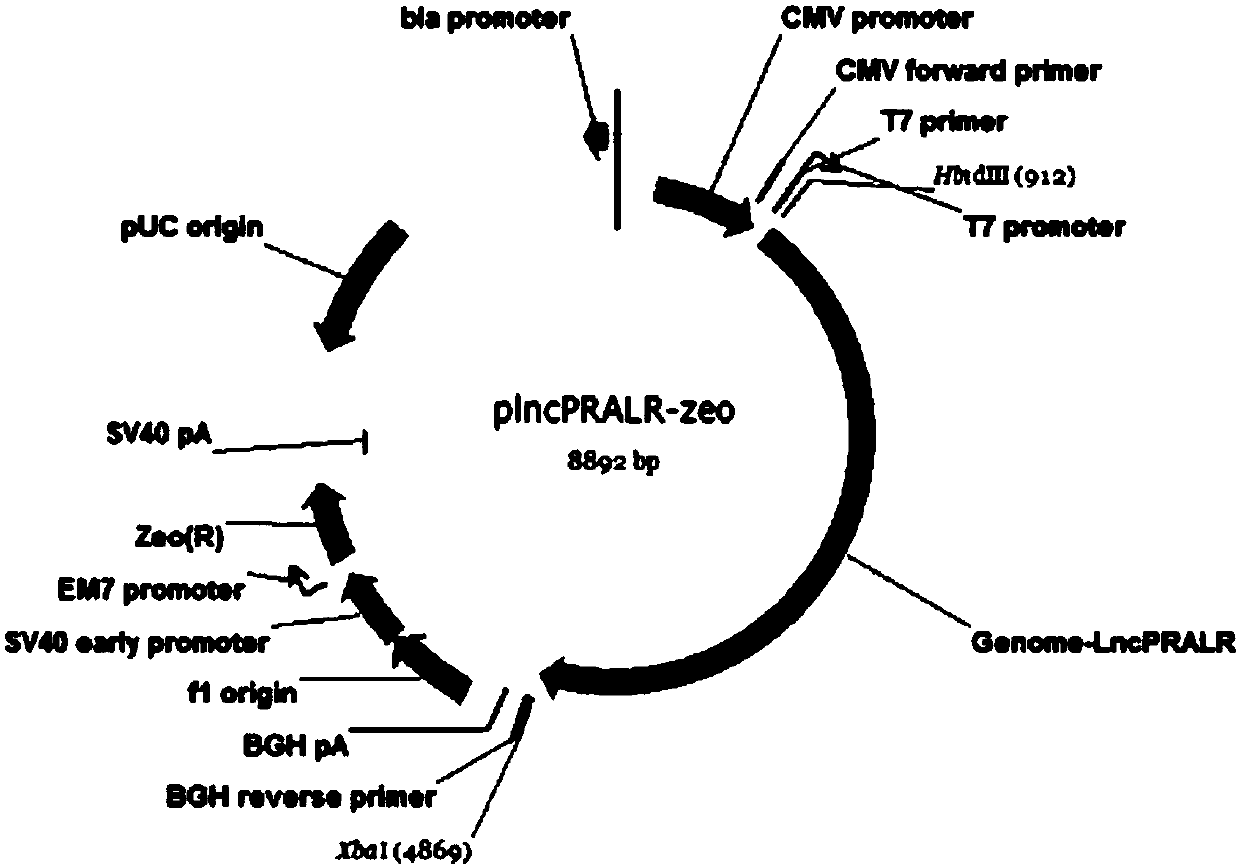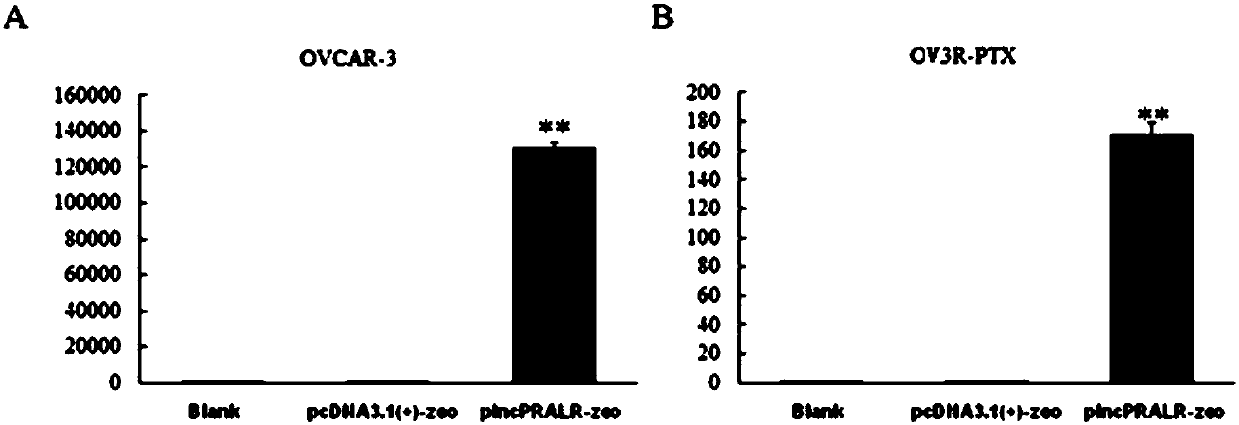SiRNA of PRALR and use thereof
A use and molecular technology, applied in the application field of drugs, can solve the problems of lack of efficient chemotherapeutic drugs, drug resistance, and inconspicuous early symptoms.
- Summary
- Abstract
- Description
- Claims
- Application Information
AI Technical Summary
Problems solved by technology
Method used
Image
Examples
Embodiment 1
[0039] Example 1 Obtaining the full-length sequence of PRALR and constructing the expression vector
[0040] 1 material
[0041] Ovarian cancer cell line OVCAR-3 (ATCC number: HTB-161);
[0042] OV3R-PTX, an ovarian cancer paclitaxel-resistant cell line established by our research group (disclosed in patent ZL201410708515.7);
[0043] Genomic DNA extraction reagent (Takara 9770A);
[0044] Total RNA extraction kit (Axygen AP-MN-MS-RNA-50);
[0045] Reverse transcription kit (Roche 04897030001);
[0046] High-fidelity enzyme PrimeSTAR Max DNA Polymerase (Takara R045A);
[0047] Restriction enzymes HindⅢ (Takara 1060A), XbaI (Takara 1093A);
[0048] PCR product recovery kit (Takara 9761);
[0049] DNA gel recovery kit (Takara 9762);
[0050] EasyGeno Rapid Recombination Cloning Kit (Tiangen VI201);
[0051] Competent cells DH5α (Tiangen CB101);
[0052] Small plasmid extraction kit (Tiangen DP103-02);
[0053] Endotoxin-free plasmid extraction kit (Tiangen DP117);
[...
Embodiment 2
[0186] Example 2 Effect of PRALR on Biological Behavior of Paclitaxel-resistant Ovarian Cancer Cells
[0187] 1 method
[0188] 1.1 Synthesis of lncRNA-siRNA
[0189] We designed three siRNAs targeting PRALR, as shown in Table 3.
[0190] Table 3 PRALR-siRNA
[0191]
[0192] 1.2 Verify the effect of siRNA knockdown
[0193] Ovarian cancer OVCAR-3 paclitaxel-resistant cells (OV3R-PTX) were plated for 24 hours, lncRNA-siRNA in the treatment group and si-NC in the control group were given for transfection (5μL siRNA+8μL X-treme GENE Transfection Reagent), and 48 hours after transfection RNA was extracted, reverse-transcribed into cDNA, and the results were detected by qRT-PCR experiments.
[0194] 1.3 Effect of PRALR on the proliferation of paclitaxel-resistant ovarian cancer cells
[0195] WST-1 kit detection method: OVCAR-3 paclitaxel-resistant cells were inoculated on a 96-well plate at a density of 5000 cells / well, and kept in a constant temperature incubator (37°C, ...
Embodiment 3
[0209] Example 3 verifies that PRALR is a PTX drug resistance gene
[0210] 1 method
[0211] 1.1 Cell transfection
[0212] OVCAR-3 or OV3R-PTX cells were seeded in 6-well plates. OVCAR-3 cell transfection empty vector pcDNA3.1 (+)-ZEO and overexpression plasmid plncPRALR-zeo (i.e. plncPRALR-zeo described in Example 1); OV3R-PTX cell transfection NC-siRNA and PRALR-siRNA2 (i.e. PRALR-siRNA2 described in Example 2). The transfection steps are the same as 2.2.9 1)-4) in Example 1.
[0213] 1.2 Determination of PTX resistance IC50
[0214] The specific steps of PTX resistance IC50 determination are as follows:
[0215] 1) 24 hours after cell transfection in step 1.1, perform trypsinization, count, and inoculate cells in a 96-well plate according to 10^4 cells / well;
[0216] 2) 37 degrees, 5% CO 2 After continuing to culture for 24 hours, PTX drugs were prepared with 1640 medium containing 10% FBS, and the concentration gradients were 0 μM, 0.001 μM, 0.005 μM, 0.01 μM, 0.0...
PUM
 Login to View More
Login to View More Abstract
Description
Claims
Application Information
 Login to View More
Login to View More - R&D
- Intellectual Property
- Life Sciences
- Materials
- Tech Scout
- Unparalleled Data Quality
- Higher Quality Content
- 60% Fewer Hallucinations
Browse by: Latest US Patents, China's latest patents, Technical Efficacy Thesaurus, Application Domain, Technology Topic, Popular Technical Reports.
© 2025 PatSnap. All rights reserved.Legal|Privacy policy|Modern Slavery Act Transparency Statement|Sitemap|About US| Contact US: help@patsnap.com



